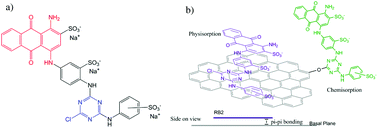Bifunctional redox tagging of carbon nanoparticles
Abstract
Despite extensive work on the controlled surface modification of carbon with redox moieties, to date almost all available methodologies involve complex chemistry and are prone to the formation of polymerized multi-layer surface structures. Herein, the facile bifunctional redox tagging of carbon nanoparticles (diameter 27 nm) and its characterization is undertaken using the industrial dye Reactive Blue 2. The modification route is demonstrated to be via exceptionally strong physisorption. The modified carbon is found to exhibit both well-defined oxidative and reductive voltammetric redox features which are quantitatively interpreted. The method provides a generic approach to monolayer modifications of carbon and carbon nanoparticle surfaces.


 Please wait while we load your content...
Please wait while we load your content...